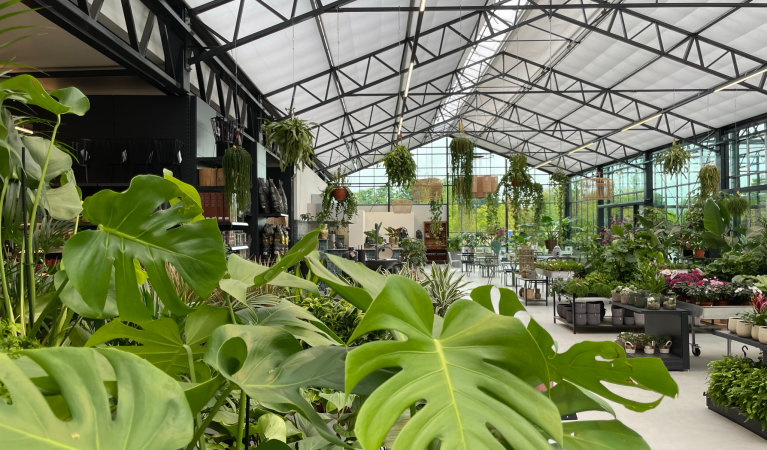The Modern Beauty and Sustainability of Botanical Glass Houses

In today’s world, where architecture meets environmental consciousness, Botanical Glass Houses have become a remarkable blend of innovation, functionality, and nature. These stunning structures, often built with intricate glass and steel frameworks, are designed to create the perfect habitat for plants while offering humans a serene escape into the world of greenery. With their growing popularity among eco-conscious architects, designers, and homeowners, Botanical Glass Houses are redefining modern horticultural architecture.
A Botanical Glasshouse is more than just an elegant greenhouse—it’s a fusion of art and science. It combines the beauty of transparent architecture with the practical purpose of nurturing diverse plant species in controlled environments. The concept revolves around providing the ideal conditions for plants that may not survive in a particular climate, allowing tropical, desert, or rare plants to flourish year-round. These structures play a crucial role in biodiversity preservation, botanical research, and public education about plant life.
Companies like Green Conceptors have embraced this architectural trend, designing spaces that marry sustainability with aesthetics. The brilliance of a Botanical Glasshouse lies not only in its visual appeal but also in its sustainable engineering. Modern glasshouse designs use high-performance glass that filters UV rays, regulates temperature, and maximizes natural light. This ensures minimal energy consumption and creates a balanced microclimate for the plants within. Such efficiency showcases how design can harmonize with environmental goals.
Historically, glasshouses were built as symbols of prestige and botanical curiosity. The 19th century saw the rise of magnificent structures such as the Palm House at Kew Gardens in London and the Crystal Palace, which became icons of architectural innovation. Today, Botanical Glass Houses continue that legacy, blending cutting-edge materials and technology with timeless design principles. They serve as centers for conservation, research, and recreation—spaces where visitors can reconnect with nature in a controlled yet natural setting.
What makes Botanical Glass Houses truly unique is their versatility. They can be designed in a range of scales—from grand public conservatories to private garden glasshouses. The adaptability of the Botanical Glasshouse allows architects to experiment with shapes, light angles, and ventilation systems. Whether it’s a curved dome, a polygonal pavilion, or a minimalist cube, each glasshouse becomes a reflection of its environment and purpose. Moreover, automated climate control systems ensure that the internal atmosphere remains ideal for plant growth, regardless of external weather conditions.
One of the greatest advantages of Botanical Glass Houses is their contribution to environmental awareness. These structures offer immersive educational experiences, teaching visitors about the importance of plant conservation and climate adaptation. Schools, botanical gardens, and universities frequently use Botanical Glasshouse facilities to study exotic species, promote research, and engage the public in ecological conversations. Beyond their academic value, they also inspire mindfulness and appreciation for nature—a much-needed balance in today’s urbanized lifestyle.
From a design perspective, the transparency of Botanical Glass Houses creates a unique aesthetic harmony between interior and exterior spaces. Natural light floods the structure, illuminating the lush vegetation inside and blurring the boundaries between architecture and nature. This visual connection offers both aesthetic pleasure and psychological benefits, promoting relaxation and a sense of peace. For urban dwellers, spending time in a Botanical Glasshouse can feel like a rejuvenating escape from the hustle and bustle of city life.
Technological innovation continues to advance the potential of Botanical Glass Houses. Architects now incorporate smart systems that monitor humidity, CO₂ levels, and light intensity, ensuring optimal growth conditions at all times. These intelligent solutions not only reduce maintenance but also enhance sustainability. The integration of renewable energy sources, such as solar panels or geothermal systems, makes the Botanical Glasshouse a symbol of green innovation. It demonstrates that environmental responsibility and modern design can coexist seamlessly.
The involvement of design experts like Green Conceptors further elevates the standard of these structures. Their approach to integrating ecological principles with aesthetic design has transformed how we view green architecture. They understand that a Botanical Glasshouse should not only protect plant life but also inspire human connection with nature. Through sustainable materials, advanced construction techniques, and creative layouts, they bring a refreshing approach to botanical architecture that resonates with modern sensibilities.
In residential and commercial spaces, Botanical Glass Houses are gaining traction as statement pieces. Homeowners are incorporating compact glasshouses in their gardens, while corporations are using them as biophilic installations in office complexes. This growing trend reflects a shift toward wellness-centered architecture—spaces designed not just for functionality, but for emotional and environmental well-being. The Botanical Glasshouse becomes a living sculpture, breathing life into modern environments and reminding us of nature’s irreplaceable role in human happiness.
In conclusion, Botanical Glass Houses represent the perfect intersection of art, science, and sustainability. They embody a deep respect for nature while showcasing human creativity in architectural form. As climate change challenges our relationship with the natural world, these glass sanctuaries stand as beacons of hope, demonstrating how we can coexist harmoniously with our environment. With visionary designers and sustainable technologies leading the way, the future of the Botanical Glasshouse is bright, green, and full of life.
ABOUT ME

Welcome to my blog Artcle slurp. We share latest article for all niche. If you want to publish your article then mail me on articleslurpblog@gmail.com
































